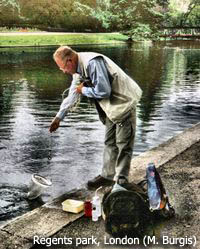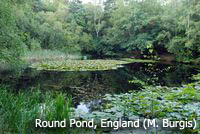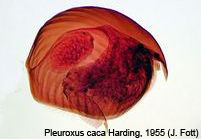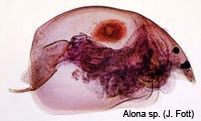Introduction

 I have collected cladoceran species (Crustacea, Cladocera - mostly Ctenopoda and Anomopoda) during more than fifty years (starting about 1955) of limnological research - as a personal long term project. Already in the mid-20th century, it was obvious that knowledge of the species diversity, and the ability to properly identify populations present in zooplankton samples, were decisive for my interest in their population ecology. There were few identification keys published at that time and to have comparative material in the form of a set of samples and permanent slides was extremely important for all my research projects.
I have collected cladoceran species (Crustacea, Cladocera - mostly Ctenopoda and Anomopoda) during more than fifty years (starting about 1955) of limnological research - as a personal long term project. Already in the mid-20th century, it was obvious that knowledge of the species diversity, and the ability to properly identify populations present in zooplankton samples, were decisive for my interest in their population ecology. There were few identification keys published at that time and to have comparative material in the form of a set of samples and permanent slides was extremely important for all my research projects.

The recent growing interest in genetics and the combination of comparative morphology data with those from DNA sequencing, further stressed the value of an extensive collection of species. Of course, such a private collection is accessible mostly only to its owner. I therefore decided to transfer my collection step by step to some professional organization with a reliable history of good custodian care. My professional activities and experience with the services of various museums supported the idea of depositing the collection at the Natural History Museum in London. Their collection is well arranged and easy to access. Their depository rooms are modern and well protected, and the managers of the Crustacea section were always very helpful and arrangements for loans of study material easy.

Additional information like GPS data on the locality, names of authors of the original description or results of more recent re-identification will be continuously supplied as well.
The data base deals only with the ethanol-preserved material, stored in glass vials (with a few exceptions). 
 My former University teacher, the late Dr. Jaroslav Hrbacek, asked me to incorporate into the collection all his Daphnia samples, as he planned a similar transfer of his material to London. At the same time I got a request (from Dr. Maria Leichtfried) to take care of the remnants of Prof. V. Brehm's collection, formerly deposited at the Biological Station in Lunz am See, Austria (which has now closed) and to select those samples not fully destroyed and worthy of safekeeping, and arrange their transfer to London. Prof. Brehm's material was preserved in formalin only. The identities of Hrbacek's and Brehm's collections are included in the descriptions of items in the list.
My former University teacher, the late Dr. Jaroslav Hrbacek, asked me to incorporate into the collection all his Daphnia samples, as he planned a similar transfer of his material to London. At the same time I got a request (from Dr. Maria Leichtfried) to take care of the remnants of Prof. V. Brehm's collection, formerly deposited at the Biological Station in Lunz am See, Austria (which has now closed) and to select those samples not fully destroyed and worthy of safekeeping, and arrange their transfer to London. Prof. Brehm's material was preserved in formalin only. The identities of Hrbacek's and Brehm's collections are included in the descriptions of items in the list.
There is a small number of samples given to J. Hrbacek and me in the past, containing type specimens (paratypes and paralectotypes; not on loan but as subsamples of a larger sample) by curators of several European museums. Those are registered in the list of species and will be gradually returned to the relevant museum collection.
As I am still working with some of the material and not all results are yet published, some of the samples in the list on the web site are not accessible at present. Those are new species, not yet described, of the genera Daphnia and Bosmina. Of course, when published, the samples with the proper species names will be "unmasked" and available to interested readers.
Vladimír Kořínek
Professor Emeritus
Department of Ecology, Faculty of Science
Charles University, Prague
